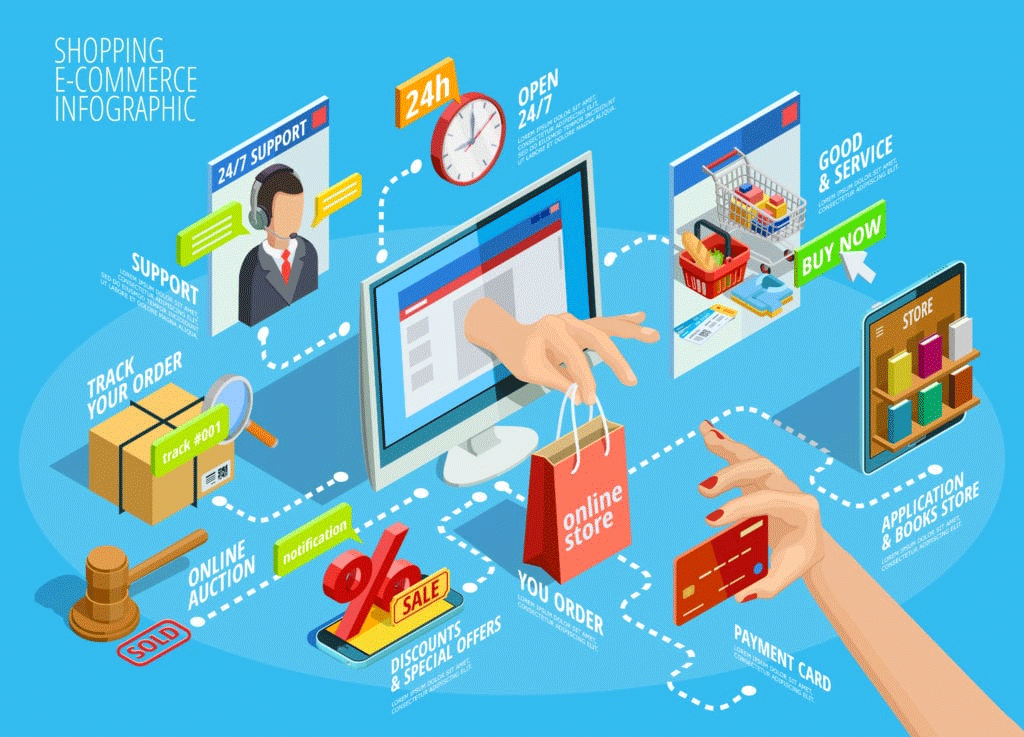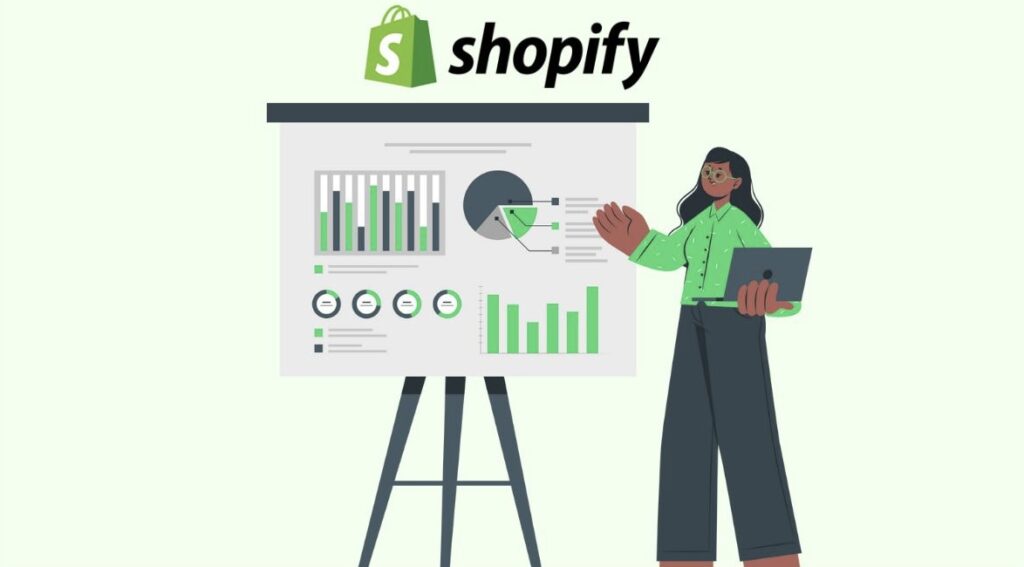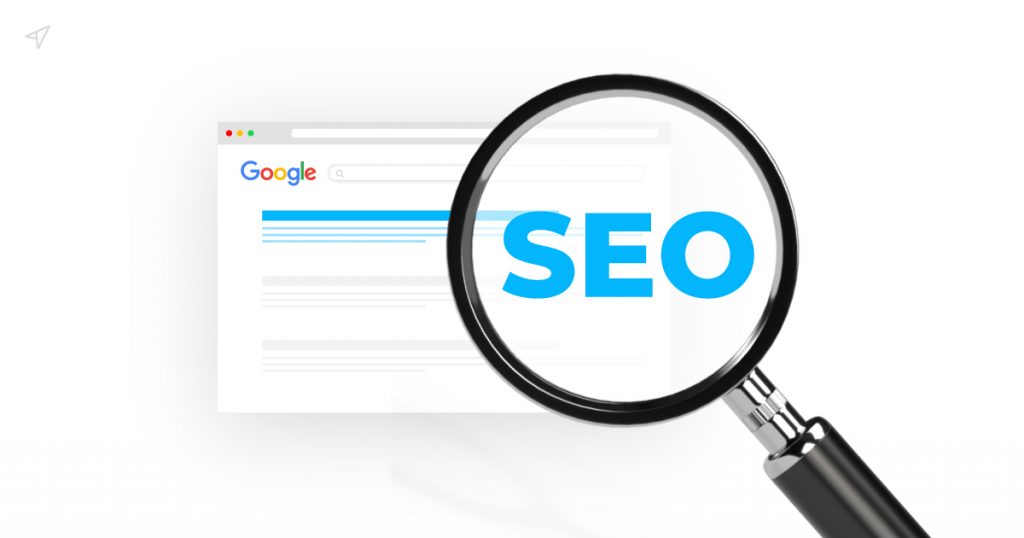
Starting e-commerce might be hard, but it’s not as difficult as it may seem. With the right guidance and a well-thought-out e-commerce strategy, you can begin your journey to create a successful online store. In this blog, we’ll take you through the essential steps to start and grow your e-commerce business.
Selecting the Right Ecommerce Platform
Your e-commerce journey begins with choosing the perfect platform. The foundation of any successful online store is the eCommerce platform you select. Consider using a user-friendly platform like Shopify eCommerce. This choice can make the entire process smoother and more efficient.

The Shopify platform offers a comprehensive set of services for online retailers, including payment processing, marketing tools, shipping solutions, and customer engagement features.
Beginners often gravitate towards Shopify due to its reputation for providing merchants with a dependable, secure, and scalable platform that actively enhances online sales and performance. 2.1 million users are currently active on Shopify.
The platform’s reporting, analytics, and automation capabilities are top-notch, offering valuable insights and streamlining operations – features that you may not fully appreciate until they are missing.

One notable advantage is its built-in SEO features, which can assist in optimizing your content for search engines. Furthermore, the platform takes care of some SEO tasks automatically, such as the inclusion of auto-generated canonical tags on pages to prevent issues related to duplicate content. Additionally, Shopify generates robots.txt files, enhancing the overall SEO friendliness of your e-commerce store.
Mastering Keyword Research for Success

SEO keywords, often referred to as “keywords” or “keyphrases,” are words or phrases integrated into online content to enhance search engine rankings for those specific terms. Typically, these keywords are identified through the process of keyword research, with selection based on factors such as search volume, competition, and the commercial intent associated with them.
Effective keyword research is your compass in the vast online market. Dive into the world of SEO keyword research using tools like the Google Keyword Planner and keyword search tools. These tools will help you uncover high-performing keywords that will make your products shine. These keywords will guide you in crafting engaging product descriptions, content, and fine-tuning your paid advertising strategies.
SEO Optimization for Better Visibility

With your keywords and compelling product descriptions in hand, it’s time to optimize your e-commerce site for search engines. This process involves strategically placing your researched keywords within your content, meta tags, and alt text for images. Your goal? To rank higher on Google and attract organic traffic to your site.
Paid Advertising with Google Ads
Easily boost your online visibility by making use of Google Ads, including Shopping Ads. These powerful tools allow you to create targeted campaigns based on your carefully chosen keywords. This increases your chances of reaching potential customers who are actively searching for your products.
Furthermore, general online advertising offers the flexibility to reach your desired audience while excluding those who aren’t a fit. Google Ads provides various targeting methods to connect with potential customers precisely when they’re searching for your products or services. Geographic targeting in Google Ads enables you to position your ads in front of local potential customers. This, combined with local SEO, can significantly boost your local customer base. Your ads appear when your target audience seeks relevant information. To succeed, establish a strong segmentation strategy, considering factors like keywords, location, age, language, and timing. The right keywords allow you to reach those actively seeking your offerings.
In a world where people constantly turn to Google Search for answers, recommendations, and purchases, search campaigns are a powerful tool. They’re particularly effective for driving sales and website traffic, as they allow you to display your ads to those actively searching for the products you provide.
User-Friendly Ecommerce Website Design
Your website is the face of your e-commerce business. Make sure it’s user-friendly with easy navigation, high-quality product images, and a straightforward checkout process. This part is one of the most important aspects of your online shop, as it makes the customer reliant on your products. Crucial for drawing in and retaining customers. If the website is looking sloppy, the customer will be less motivated to buy or trust your product. Therefore, we will dive deeper in how to invest enough time into creating a visually appealing e-commerce website.
Here’s how you can create a captivating e-commerce design in 20 easy and simple steps:
1. Consistent Branding: Assure that your website’s color scheme, typography, and overall style are consistent with your brand’s identity. This promotes brand recognition.
2. Clean Layout: Keep your website uncluttered and organized. Use a clear hierarchy with headings and subheadings to guide visitors.
3. High-Quality Images: Use professional, high-resolution images of your products. Multiple angles and zoom functionality can provide customers a detailed look.
4. Mobile Responsiveness: Your website must be responsive, adjusting to various screen sizes. A significant portion of users shop from mobile devices.
5. Intuitive Navigation: Make it easy for customers to find what they’re looking for. Use clear categories and filters. Implement a search bar for quick access.
6. Engaging Product Pages: Each product page should have a clear title, detailed description, pricing, and a call-to-action (CTA) button. Include customer reviews and ratings.
7. User-Friendly Checkout Process: Simplify the checkout process. Minimize the number of steps required for a purchase and offer multiple payment options.
8. Loading Speed: Make sure your website loads quickly. Slow websites can drive potential customers away.
9. Secure and Trustworthy: Highlight trust signals such as secure payment options, SSL certification, and return policies.
10. Effective Use of White Space: White space, or empty space on your site, creates a clean and uncluttered appearance, making it easier for users to focus on your products.
11. Typography: Choose legible fonts for both headings and body text. Consistency in font styles and sizes throughout the site enhances readability.
12. Call to Action (CTA) Buttons: Use contrasting colors for CTA buttons to make them stand out. Phrases like “Add to Cart” or “Buy Now” should be clear and compelling.
13. Social Proof: Showcase customer reviews, testimonials, and endorsements to build trust and credibility.
14. Storytelling: Use compelling narratives and visuals to tell your brand’s story. Customers often connect with brands that have a unique and relatable story.
15. Optimize for SEO: Incorporate relevant keywords into your product descriptions and meta tags to improve your site’s visibility in search engines.
16. Customization: Offer customization options if relevant to your products. Allow customers to personalize their purchases.
17. Responsive Customer Support: Provide easily accessible customer support through live chat, email, or phone. Responsive customer service can build trust.
18. Scalability: Ensure your website is scalable as your business grows. Choose an e-commerce platform that can accommodate your future needs.
19. Loading Speed: Optimize images and code for fast loading times. Slow websites can frustrate users.
20. Test and Refine: Regularly test your website’s user experience and gather feedback to make improvements. Aesthetic preferences can evolve.
By focusing on these elements and constantly fine-tuning your website, you can create a visually appealing e-commerce site that not only attracts customers but also provides them with an enjoyable shopping experience and will also have a positive impact on your SEO rankings.
Accessibility with Alt Text
Make your site accessible to all users by including Alt text for images. This practice provides visually impaired visitors with a description of your products, enhancing accessibility and contributing to SEO.
In more detail; Alt text, short for “alternative text,” is a brief and descriptive attribute applied to an image in HTML. It serves as a textual representation of the image’s content, typically for cases where the image cannot be displayed to the user. Alt text is primarily used for accessibility purposes to assist individuals who are visually impaired or use screen readers.
When an image has alt text associated with it, the screen reader will read the alt text aloud, enabling users to understand and interpret the image’s content or purpose. Alt text is crucial for ensuring that websites and online content are accessible to a broader audience, including those with disabilities.
In addition to enhancing accessibility, alt text also has SEO benefits. Search engines like Google use alt text to better understand and index the content of images, which can contribute to improved search engine rankings and visibility. It’s essential to write informative and concise alt text that accurately describes the image, as this benefits both accessibility and SEO efforts.
Developing a Solid E-commerce Strategy
A well-rounded e-commerce strategy should encompass all the steps mentioned above. Keyword research, SEO optimization, and paid advertising should be an important part of your overall plan.
In more depths, developing a well-rounded e-commerce strategy begins with setting clear objectives and understanding your target audience. Analyzing your competitors and selecting the right e-commerce platform are essential steps. Carefully curate your product offerings and establish a competitive yet profitable pricing strategy.
Ensure efficient shipping and fulfillment processes, design a user-friendly website, and implement a robust SEO and content strategy. Utilize content marketing, email marketing, and social media to engage with your audience, and employ paid advertising to drive traffic. Provide excellent customer service and monitor key performance indicators for ongoing improvement. Focus on security and trust, develop customer loyalty programs, and be prepared to scale and expand as your business grows. Regularly review and adapt your strategy to meet evolving market conditions and customer preferences, all while allocating your budget and resources wisely to optimize your e-commerce success.
Conclusion
Starting and growing your e-commerce business is an achievable goal. By carefully selecting your platform, mastering keyword research, optimizing your site, and following best practices, you can create a successful online store. With dedication and the right strategy, you’ll find e-commerce to be a rewarding and exciting venture.
So, are you ready to begin on your ecommerce journey? Start today, and watch your online store flourish.